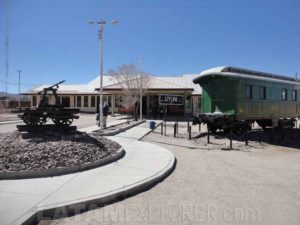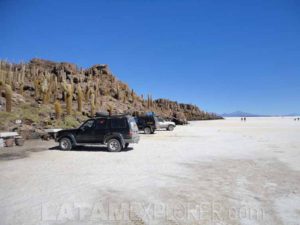Home > Destinations > Bolivia > Uyuni
Uyuni, Bolivia
Standing away from the rest of civilization, lost and almost forgotten in a semi-desert region of the Bolivian Altiplano (Andean Plateau), the city of Uyuni attracts a small crowd of visitors coming from all corners of the planet to meet one of the most surreal landscapes on Earth. The huge salt flats in the neighborhood, and in particular the Salar de Uyuni, evoke various emotions in those who come for the first time. In addition to these huge salt fields, the region of the triple border between Bolivia, Chile and Argentina offers mountains, volcanoes, colored lagoons and a number of interesting geological formations.
The city of Uyuni itself is at the junction of the railroads that head to Oruro, Potosí, Calama (Chile) and Villazón (at the border with Argentina). Located at an altitude of 3,665 meters (12,025 feet), the city experiences cold nights, especially in winter, and very little rain for most of the year, with the exception of the period between December and February. Although the community is served by a small airport offering regular flights to the capitals La Paz and Sucre, most tourists find it wiser to arrive by bus from Oruro (320km / 200mi) or Potosí (200km / 125mi). Other options worth considering are the trains from Oruro or Tupiza, or a 4x4 tour from the Chilean city of San Pedro de Atacama, which usually lasts 3-4 days and lets you see the main attractions present in the way.
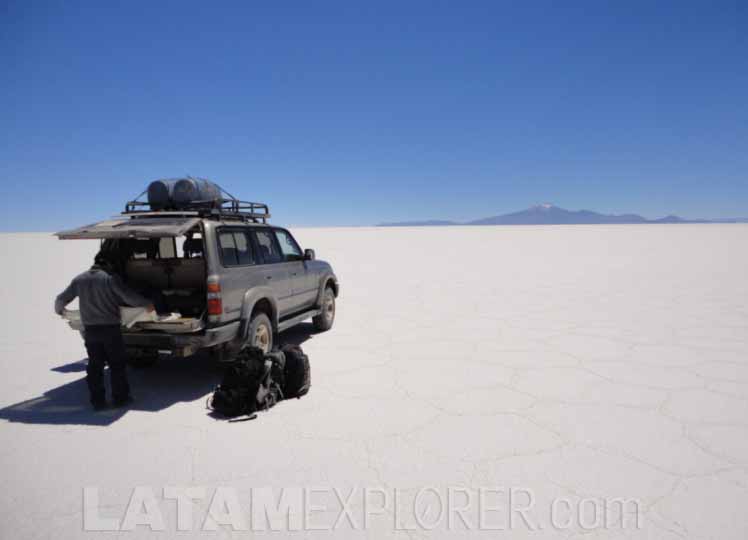
The main attraction of the city's vicinity is the Trains Cemetery. Situated about 3km (1.8mi) from the city center and connected to the old railway network, the site houses several steam locomotives and wagons used to transport minerals during the late nineteenth century and the first half of the twentieth century. With the decline of the mining exploration cycle, the obsolete trains were simply abandoned on site.
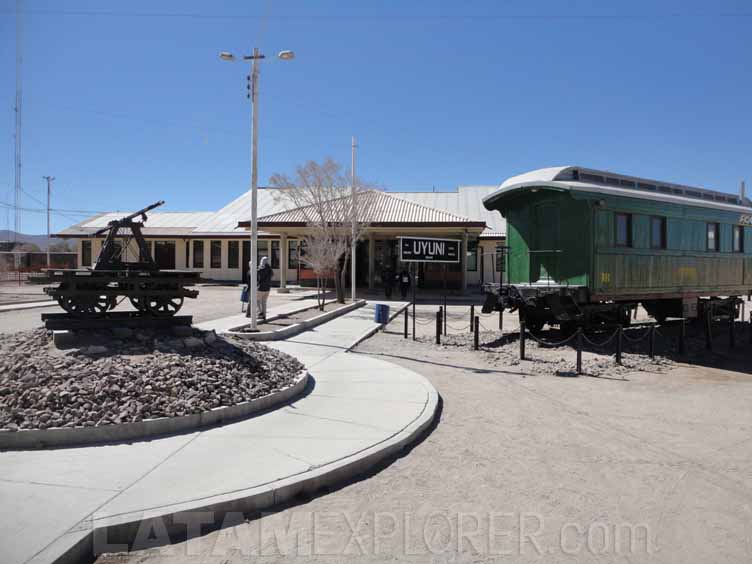
Located just 7km (4.3mi) from Uyuni, the town of Colchani still relies on the salt processing industry for survival. This is, for many, the true gateway to the largest salt flat in the world: the Salar de Uyuni. Occupying an area of over 10,000 km² (3,860 sq. mi) and reaching a thickness of more than 10 meters (33ft) at its center, this is an almost flat stretch of land, with a gap of only one meter between its higher and lower points. The most practical way to visit the salar and the area around it is through tours that vary in length from half to four days. Although many operators offer tours of the region, the reality is that their itineraries are very similar to each other; even the tours leaving from San Pedro de Atacama, in Chile, often visit the exact same places. What usually varies is the type of vehicle, lodging and food included.
One of the main stops on the way is the Incahuasi Island, which features a fossilized coral and a lot of centenary cacti. Off the salar, but usually present in multi-day itineraries, the Stone Tree, a rock shaped in the form of a tree by action of the wind, is located more than 4,400 meters (14,400 feet) above sea level and is one of the most fascinating geological formations on the way. This region is also dotted by several lakes; some of the most visited are the Laguna Colorada, colored red by the local algae and housing a colony of flamingos, and the Laguna Verde (Green Lagoon), that gained its color due to the high concentration of metals which forms together with the Licancabur Volcano, an enchanting landscape. Nearby you’ll also find the White Lagoon and, on the way to Tupiza, the Yellow and Celeste Lagoons. The region also has several hot springs and some geysers fields, among which the most famous is just across the border, in Chile (these are the Geysers del Tatio, which despite lying near to the border, require driving a relatively large distance to be reached by land).
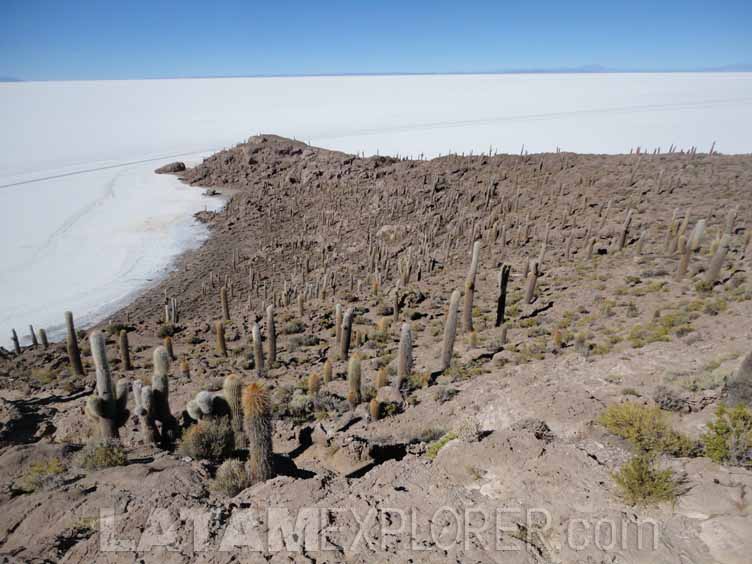
Continuing your trip to Chile is indeed a very convenient option to complement a trip to Uyuni. Although the tour mentioned earlier in 4x4 is the most beautiful option, it is also possible to drive by conventional roads to the border with Chile. In this case there will be 225km (140mi / 3h30) to the Chilean town of Ollagüe and another 300km (185mi / 5h) to San Pedro de Atacama or Iquique. The city of Villazón, on the border with Argentina, is 300km (185mi / 6h30 drive) away from Uyuni, and La Paz is 540km (335mi) away (7h20 by car, or more than 10h by bus).
